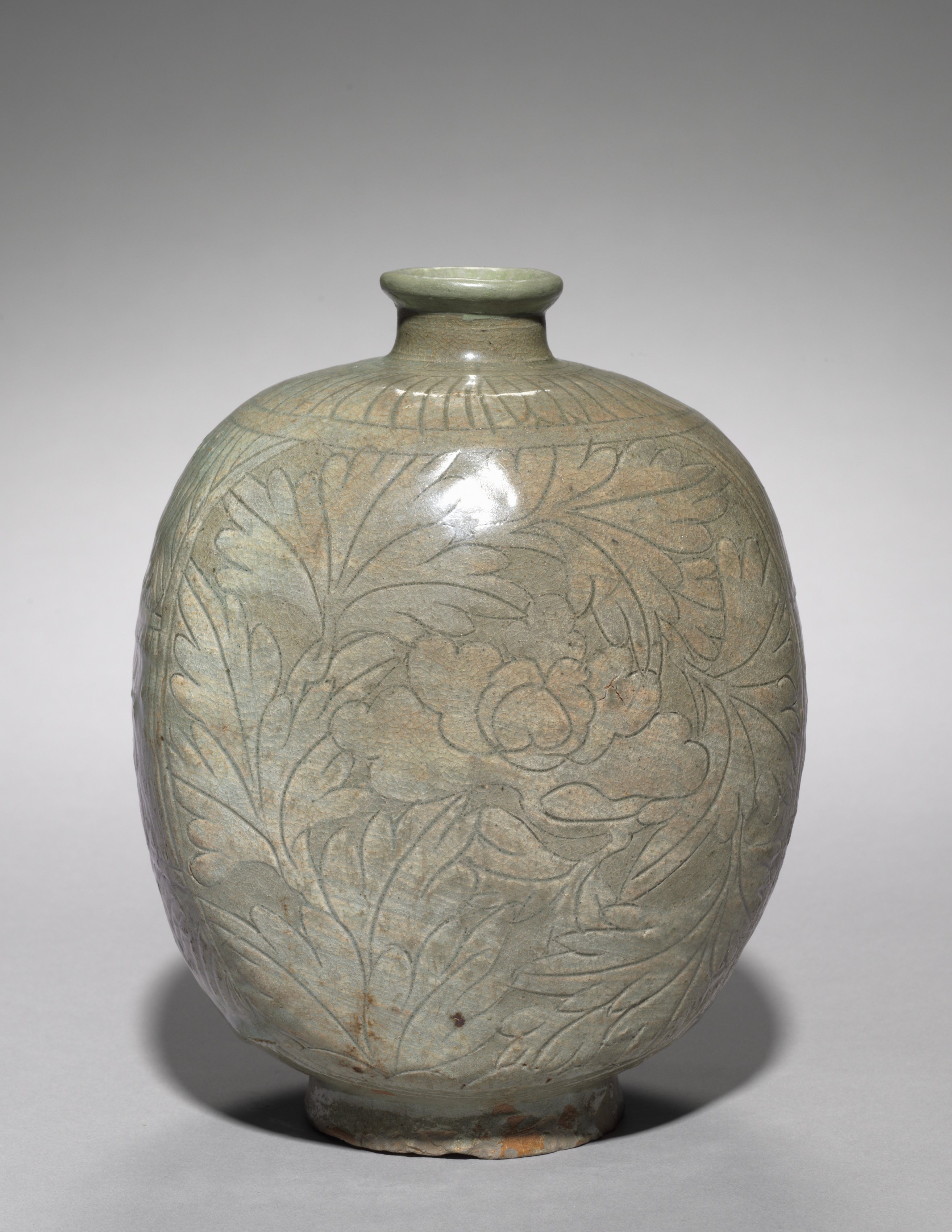The Cleveland Museum of Art
Collection Online as of April 26, 2024

Wine Flask with Incised and Sgraffito Peony Design
1500s
Location: not on view
Did You Know?
The term buncheong, which refers to this type of pottery, means "powdered gray-green glazed ceramics.”Description
Produced in both central and provincial kilns during during the 1400s–1500s, buncheong (literally means "powdered green"), like this wine flask commonly feature gray-green glaze due to the usage of less processed and refined clay high in iron. Many experimental techniques such as white slip, inlay, stamping, and incising, which had been explored and perfected in the Goryeo period, were also adopted for buncheong pottery. The artist for this work extensively used the incising technique to draw both floral and abstract patterns.- Lee, So-young, and Seung-chang Jeon. Korean Buncheong Ceramics from the Leeum Samsung Museum of Art. New York: Metropolitan Museum of Art, 2011.Treasures from Korea: Arts and Culture of the Joseon Dynasty, 1392-1910. Philadelphia: Philadelphia Museum of Art, 2014.Park, Kyung-ja and Park Hyeong-soon. “Evolution of the Buncheong Wares in the Early Joseon Period as the White Porcelain Takes over the Taxation Supply [조선 전기 공납용 백자제작에 따른 분청사기 양식변화].” Misul sahak (2010): 291-321. www.dbpia.co.krBuncheong Ware [분청사기]. Seoul: Ehwa Woman’s Universtiry Museum, 2019.Ch'a, Mi-rae, Kwi-suk An, Cleveland Museum of Art, and 국외소재문화재재단. The Korean Collection of the Cleveland Museum of Art. Edited by An Min-hŭi. First edition, English ed. Overseas Korean Cultural Heritage Series, 16. Seoul, Republic of Korea: Overseas Korean Cultural Heritage Foundation, 2021. Mentioned and reproduced: P. 83
- {{cite web|title=Wine Flask with Incised and Sgraffito Peony Design|url=false|author=|year=1500s|access-date=26 April 2024|publisher=Cleveland Museum of Art}}
Source URL:
https://www.clevelandart.org/art/1921.649